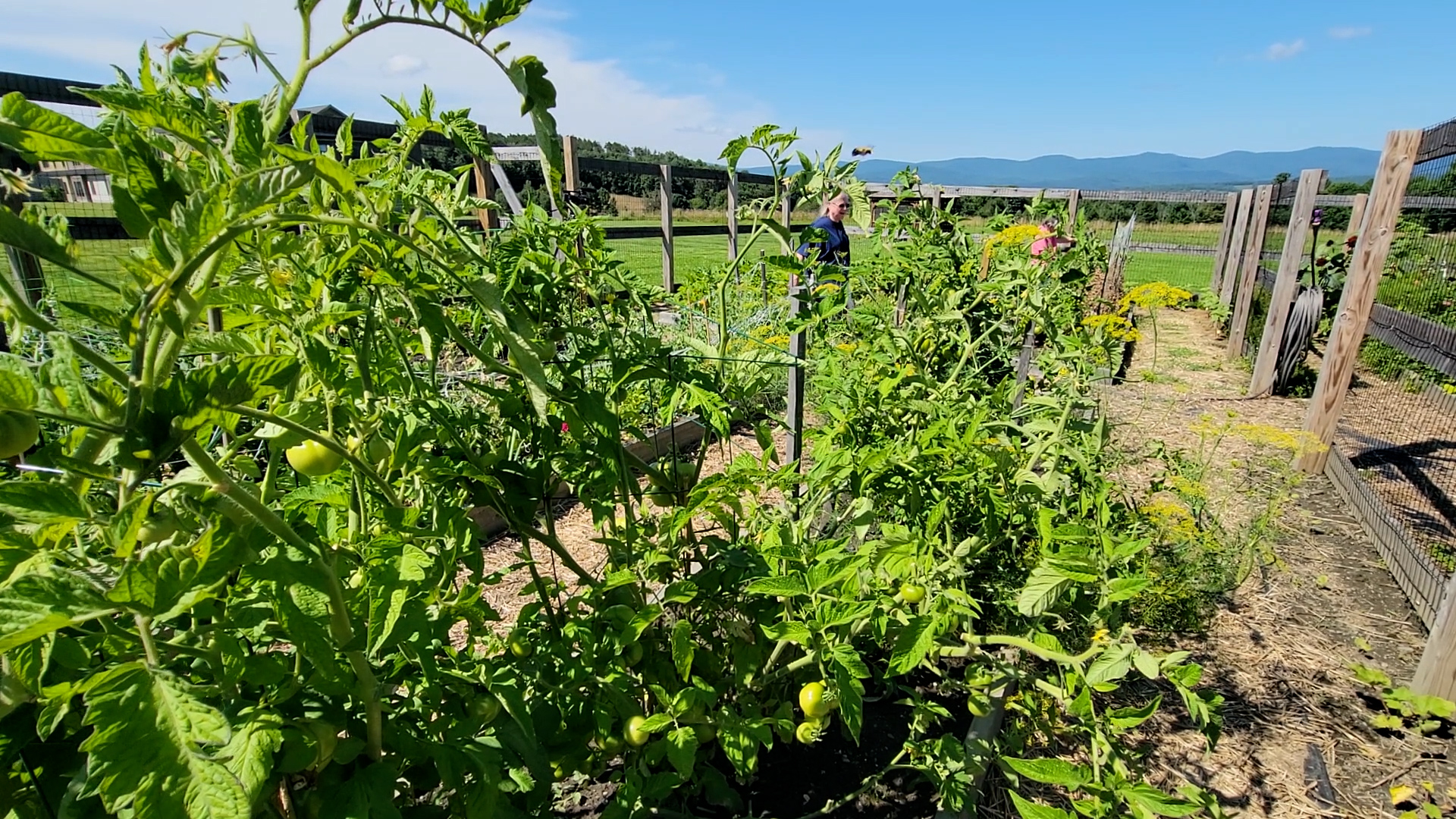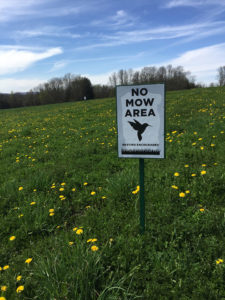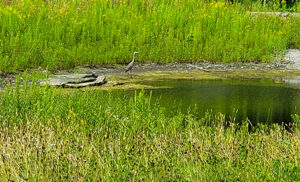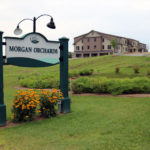Offering residents opportunities to be active both inside and out is an important part of creating a healthy lifestyle. And with property that’s nestled among 30-acres of gently sloping meadowland, providing a way to not just view it, but engage with it, has been a priority for Morgan Orchards from day one.
As residents began settling into their apartments, we knew we had to address ways to enable them to interact with their new backyard. The easiest way to get them out and into nature was to kick-off one of our first landscaping projects—installing a series of walking trails.
Two summers have since passed and in that time we have developed a network of around one-mile of walking trails on the north end of the property. Yet even today the paths continue to evolve as residents learn more about the landscape and how it’s affected by the changing seasons. And each year they’ve offered feedback on which trails they enjoy, which they don’t, and areas they’d like to focus on next.
But no matter which direction the paths wind, they all lead to beautiful and relaxing destinations.
The first is the compass rose. Aligned to the cardinal directions, this stone-ringed flower bed is anchored by a flagpole and was donated by Al Wilker and Vance Smith. And just beside it is a rock garden complete with a bench for walkers to sit and enjoy the view across the meadow to the surrounding hillside.
From here, the trails veer in two directions.
The first path takes one back up through the meadow toward the building’s west face. Here a sidewalk lined with tall planting boxes that are bursting with brightly colors leads to the stone patio where you can pull up a rocking chair to take in the stunning view of Braintree Hill, or gather around a table with friends while enjoying a cold beverage.
But it’s the second path that hides the property’s best feature. Here the trail curves around a stand of trees and opens onto a small pond.
“I love to walk out to the pond,” shared Betty Edson, who’s declared the pond as her favorite place to visit. “It’s a peaceful spot.”
Created during construction, the pond is a place where you can pause and be surrounded by nature. Here you can listen to the wind rustle through the trees, watch frogs hop along the water’s edge, and if you’re still enough, you might even catch a glimpse of visiting waterfowl taking a rest.
From here the grassy path transitions to mulch to continue around the pond and through a tree-lined walkway where it emerges back into the grassy meadow to wind its way up toward the building.
And while the gently sloping meadows and trails are at their most beautiful in the spring and summer, in the winter they offer outdoor adventure by snowshoe or cross-country skis. And parts of the Morgan Orchards trails connect to the VAST trail system that abuts the property, allowing residents to venture even further afield.
Interested in exploring Morgan Orchards’ trail system? Download a map of the walking trails.
Living Among the Wildlife
One perk to living in a rural area is the natural presence of wildlife. And at Morgan Orchards the wildlife flourishes.
Here one might spot a white-tailed deer, a woodchuck, and even a red fox in the fields. Plus there are also butterflies, moths, and dragonflies fluttering about the property.
But it’s the birds that have stolen the hearts of our residents.
In the field alone residents have observed song sparrows and red-wing blackbirds. But the ever-popular robins, blue jays, and chickadees have also been spotted. And larger birds of prey like the red-tailed hawk, waterfowl including a great blue heron, and even a snowy owl have been seen on the grounds.
Their presence is both noted and encouraged.
One of the early projects residents requested was to install several birdhouses, and a few hummingbird feeders, around the property. Today, there are roughly half-a-dozen birdhouses spread around the east, north and west sides of the building for tree swallows and bluebirds.
But it’s the community’s newest addition that they’re most proud of.
In the summer of 2019, residents helped to designate a “no-mow” area on the west side of the building. Measuring 50 feet by 400 feet, this bird sanctuary offers a safe place for nesting.
One bird residents are most interested in helping is the bobolink. A member of the blackbird/oriole family, bobolinks are experiencing a significant decline in their population. And one likely cause is the loss of their nesting habitat of hayfields and meadows.
“Our property was formerly used for agriculture,” commented Claudia Noyes, who doesn’t consider herself a serious birder, but likes to know what she sees out her windows. “Optimizing a significant portion of our land for bird and butterfly habitat allows productivity to continue in a different manner.”
But supporting the birds is about more than protecting nature. It also brings enjoyment to the residents.
When asked about the community’s friendly flyers, Mary Williams, a child of birding parents, shared: “Having these birds on our property is very important to me as my mobility is comprised, so it’s wonderful to have the birds nearby where I can watch and enjoy them.”
So if the weather’s nice the next time you’re at Morgan Orchards, consider venturing out on one of our walking trails. You’ll not only experience amazing views of Vermont’s countryside, but you might also spot some of our winged neighbors from songbirds to birds of prey and waterfowl.
Here are just some of the birds seen by our residents:
- Blue jay
- Bobolink
- Chickadee
- Goldfinch
- Killdeer
- Red-wing blackbird
- Robin
- Sandpiper
- Sparrow: American (song), Savannah & white-crowned
- Snow bunting
- Thrush
- Titmouse
- Warbler
- Woodpecker
Birds of Prey:
- American kestrel
- Northern harrier
- Raven
- Red-tailed hawk
- Snowy owl
- Turkey vulture
Waterfowl:
- Canada geese
- Great blue heron
- Mallard duck
This is the second in a series of articles on the development of the Morgan Orchards landscape. Check back next week as we take a closer look at the community’s garden spaces.
Read the other articles in this series:





